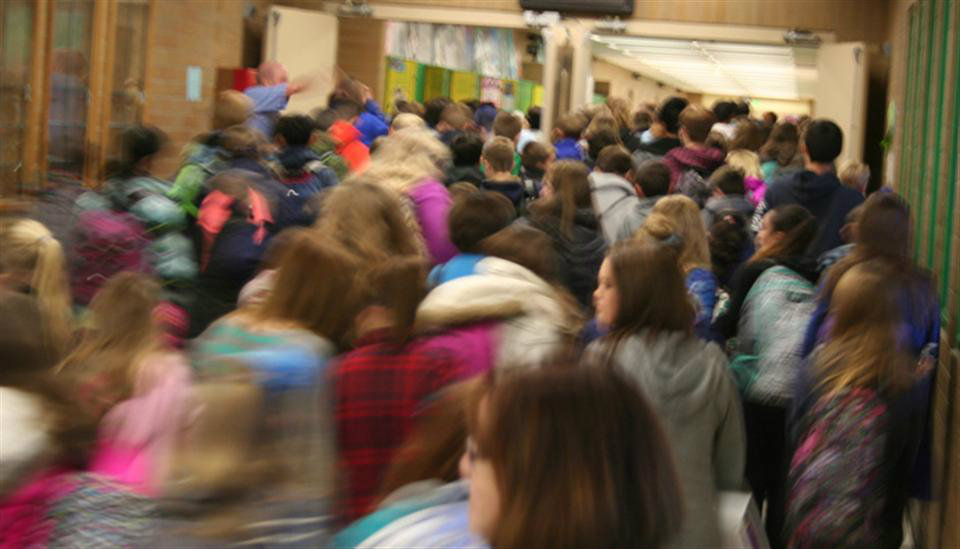For Chuck Shackett, presiding over Idaho’s fastest growing school district has its ups and downs.

On the plus side, there’s the excitement and the fun of opening new schools — and Bonneville School District has added six new grade schools in the past nine years. On the downside, there is the ongoing pressure to convince voters to raise their taxes — and next month, Bonneville will take another run at a bond issue to build a new high school.
Statewide, K-12 enrollment increased from 289,063 to 291,010, an increase of 0.7 percent, according to Feb. 15 numbers compiled by the State Department of Education. Ninety-nine of the state’s districts and charters saw their numbers go up, or down, by 20 students or less — roughly the size of one class.
However, there were some pockets of larger enrollment increases or declines. Here’s a look beyond the numbers:
Bonneville (2013-14, 11,149; 2014-15, 11,887; 6.6 percent increase)
Shackett isn’t sure exactly what is driving growth in his Eastern Idaho district — but he doesn’t see it slowing. In 2014, 150 new homes were built within the district’s borders; this year, Shackett is expecting another 200 new homes.
Some homeowners are drawn to the rural feel of the Bonneville district, which is largely on the outskirts of Idaho Falls. And since starter homes account for most of Bonneville’s residential growth, Shackett is counting on continued enrollment growth.
For all growing districts, new enrollment means new money from the state. While complicated, the state’s funding formula is pinned to average daily attendance — so, as enrollment goes up, so too does state support. Growing districts can also impose emergency property tax levies to pick up the slack, without voter approval. Bonneville is collecting nearly $1.4 million in emergency levies this year. (Click here for a breakdown of emergency levies across Idaho.)
But the state support and the emergency levies do not help build new schools — and Bonneville officials say that remains a long-term need.
District voters have rejected two building bond issues since 2014. In March, a $56.1 million bond issue for a new high school received 65.7 percent support, falling just shy of the needed two-thirds supermajority. The need hasn’t gone away, and Shackett is confident the bond issue will pass on May 19. “It came so darn close, we had to give it one more shot.”
West Ada (2013-14, 36,111; 2014-15, 36,513; 1.1 percent increase)
In the “old” days, before the Great Recession, this suburban district routinely added more than 1,000 new students a year.

And that’s probably on the horizon again, as construction picks up, district spokesman Eric Exline said this week.
The state’s largest school district held off on bond issues during the downturn. But in March, voters approved a $96 million bond issue that includes money for two new middle schools, and money to finish a renovation at Meridian High School.
West Ada is also collecting a $1.1 million emergency levy.
Sage International School (2013-14, 548; 2014-15, 839; 53.1 percent increase)
The Southeast Boise charter school has been in rapid growth mode since it opened in 2010 to 218 students. The growth is no accident, but is part of a long-term strategic plan.
The school is setting up a new campus in a converted shopping mall; about 30,000 square feet have been renovated, and another 50,000 square feet await a makeover. But in order to pay for the building and the land purchase, school leaders figure they need a sustained enrollment of 800 to 1,200 — and the state dollars that come with it.
This year’s growth added up to about a $1 million increase in state funding, said Sage executive director Don Keller. The school’s annual budget is about $5 million.
And all of a charter school’s funding is in some way tied to enrollment, he said — whether it’s operational funding, state dollars for professional development or charter schools facilities funding.
The enrollment boost provided a windfall for Sage, but it didn’t alleviate much of the pent-up demand for space. This spring, said Keller, the school had 1,030 applicants for 80 seats.
Idaho Virtual Academy (2013-14, 2,965; 2014-15, 2,464; 16.9 percent decrease)
The state’s largest charter school, IDVA also experienced the largest enrollment drop of any district or charter in Idaho.
Head of school Kelly Edginton downplayed the loss of more than 500 students. “As schools of choice, there’s a natural fluctuation in enrollment.”
Edginton also said the fluctuation is a result of the growth of Idaho charter schools. When IDVA opened in 2002, it was one of 13 charter schools statewide. The state now has almost 50 charter schools.
IDVA wasn’t the only Idaho charter school to experience a steep enrollment drop. The iSucceed virtual charter high school saw enrollment drop from 398 to 284, a 28.6 percent drop.
Nampa (2013-14, 15,044; 2014-15, 14,892; 1 percent decrease)
Idaho’s third largest district experienced the state’s second largest decrease in district enrollment. Only the Blackfoot School District lost more students.
Nampa’s dropoff wasn’t unexpected. For one thing, the birth rate in Canyon County dropped steadily from 2007 to 2011. This has probably already affected kindergarten enrollment — and it could affect kindergarten enrollment for the next couple of years.
Nampa is anticipating flat state funding, while it tries to make investments that were put off during the recession — in staffing, maintenance, technology and curriculum. “Budgets will continue to be tight,” district spokeswoman Allison Westfall said.
Idaho Education News data analyst Randy Schrader compiled information for this report.
